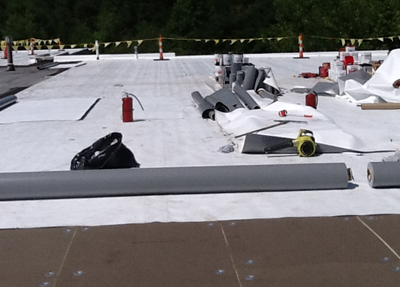The roofing industry recommends that workers perform maintenance in spring and fall.  Others take the philosophy that you want to have your inspection done once before the season with the most severe weather and once after.
Others take the philosophy that you want to have your inspection done once before the season with the most severe weather and once after.
In the northern climates, the severe weather is winter where the cold, storms and precipitation contributes more to the demise of the roof. However, where hot weather rules, summer is the severe season. The solar UV radiation is higher, and the roof is subjected to high heat and sudden cooling during summer rains.
Regardless of how you schedule your seasonal roof maintenance, the uniform goal is to prepare the roof for expected damaging weather and then repair any problems that happened as a result of weather events.
Routine roof maintenance primarily involves visual inspection of the roof system by roofing professionals who are familiar [Inspection] with the roof type and can determine if components need repairs.
What benefit is there in spending money every year to maintain the roof? Studies have shown that a roof that is not regularly maintained will only last about half of its expected service life.
But, you say, “That’s why I have a warranty.” Don’t assume that a warranty will help. Almost all manufacturers of roofing materials state specifically in their warranty that the warranty is void if the roof is not maintained. If you can’t show that the roof has been maintained, you will not have a case when you try to make a claim on a supposed warranty issue.
Experienced facility managers know that a roof should be inspected at least twice a year to keep the roof alive as long as possible and to maintain the warranty. A reputable roofing company like CP Rankin has a fleet of service technicians that handle routine roof maintenance calls all year long and during change of season. Service teams will thoroughly inspect your roof and take proactive measures to help you maintain roof longevity.

